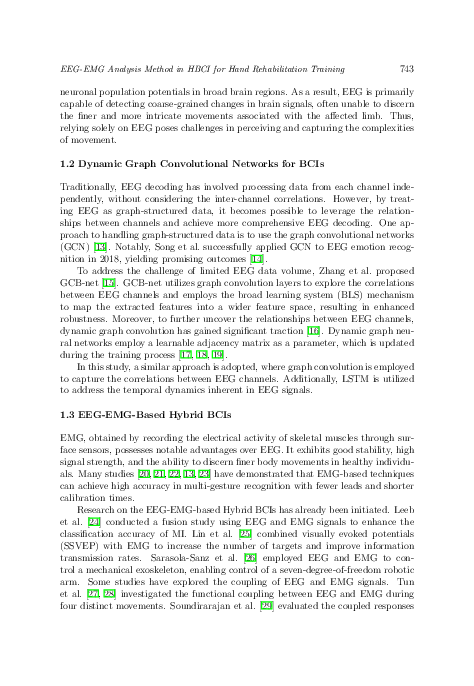EEG-EMG Analysis Method in Hybrid Brain Computer Interface for Hand Rehabilitation Training
keywords: Hybrid BCI, EEG, EMG, GCN, neural networks
Brain-computer interfaces (BCIs) have demonstrated immense potential in aiding stroke patients during their physical rehabilitation journey. By reshaping the neural circuits connecting the patient's brain and limbs, these interfaces contribute to the restoration of motor functions, ultimately leading to a significant improvement in the patient's overall quality of life. However, the current BCI primarily relies on Electroencephalogram (EEG) motor imagery (MI), which has relatively coarse recognition granularity and struggles to accurately recognize specific hand movements. To address this limitation, this paper proposes a hybrid BCI framework based on Electroencephalogram and Electromyography (EEG-EMG). The framework utilizes a combination of techniques: decoding EEG by using Graph Convolutional LSTM Networks (GCN-LSTM) to recognize the subject's motion intention, and decoding EMG by using a convolutional neural network (CNN) to accurately identify hand movements. In EEG decoding, the correlation between channels is calculated using Standardized Permutation Mutual Information (SPMI), and the decoding process is further explained by analyzing the correlation matrix. In EMG decoding, experiments are conducted on two task paradigms, both achieving promising results. The proposed framework is validated using the publicly available WAL-EEG-GAL (Wearable interfaces for hand function recovery Electroencephalography Grasp-And-Lift) dataset, where the average classification accuracies of EEG and EMG are 0.892 and 0.954, respectively. This research aims to establish an efficient and user-friendly EEG-EMG hybrid BCI, thereby facilitating the hand rehabilitation training of stroke patients.
reference: Vol. 42, 2023, No. 3, pp. 741–761


